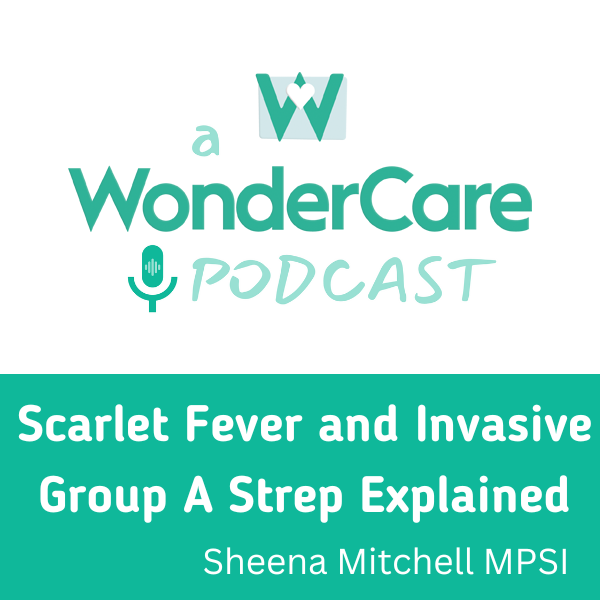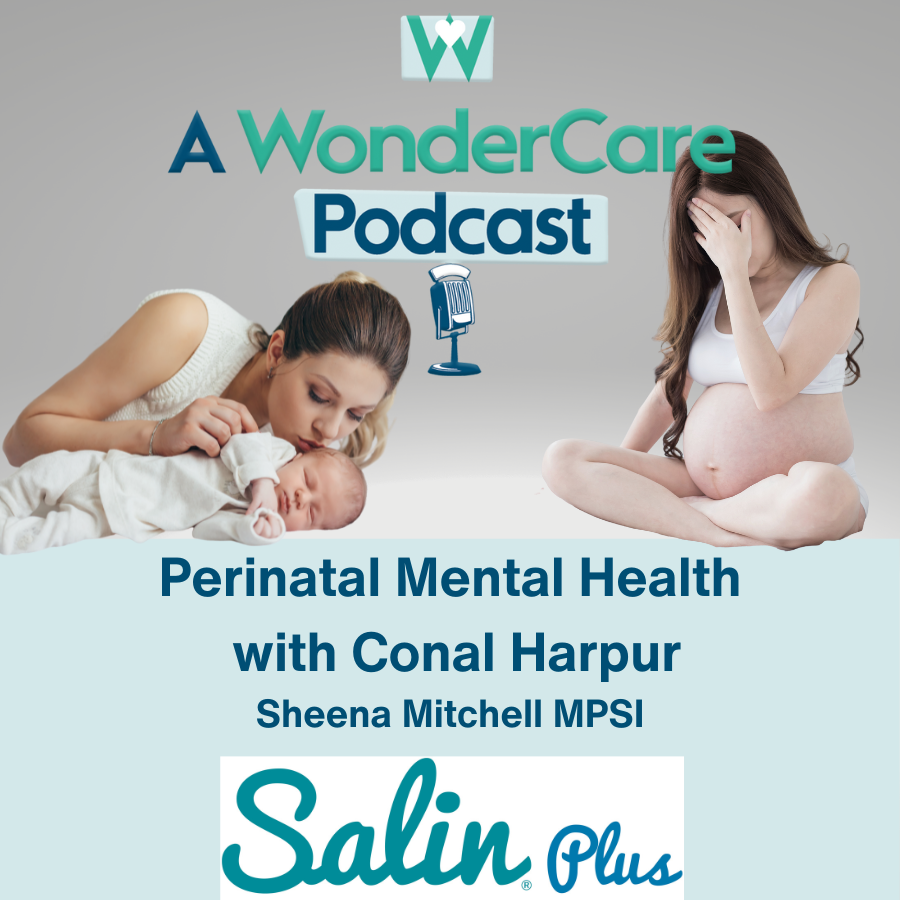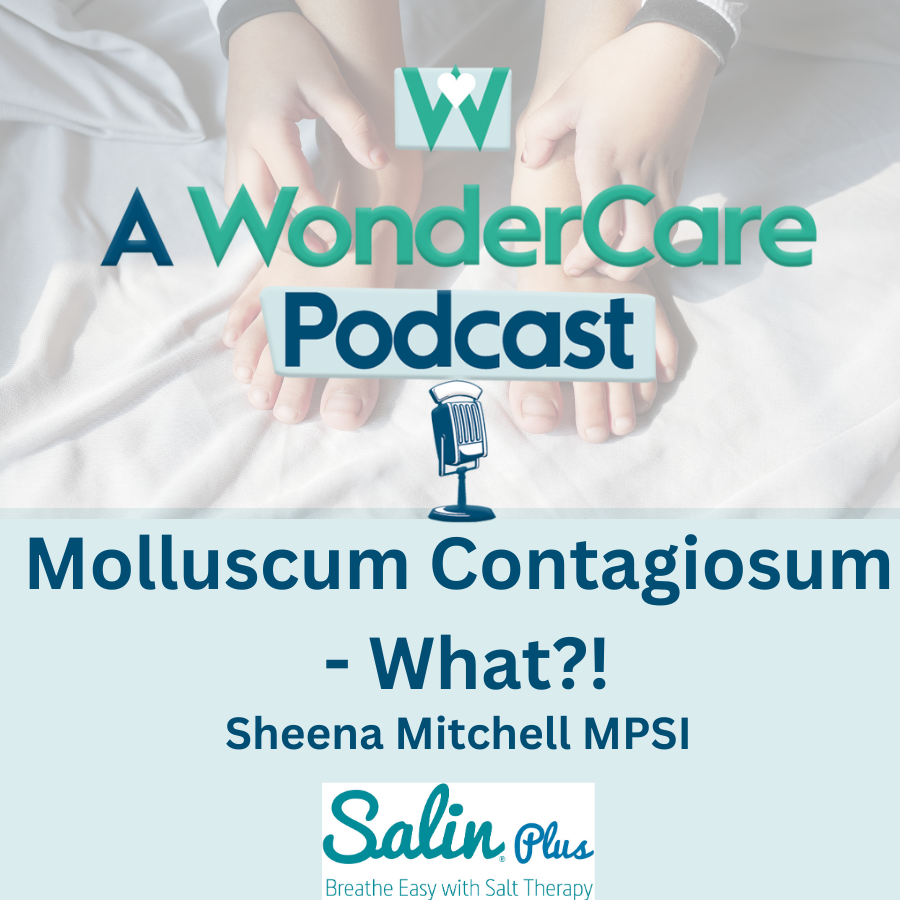Episode Transcript
Speaker 1 00:00:02 Hello and welcome to a Wonder Care podcast. I'm Sheena Mitchell, pharmacist and mom of three. I combine healthcare and practical advice to support you on your parenting journey. This season is all about family skincare and it's proudly sponsored by real life. Real life. Believe your skin says how you feel, and this is so, so important as we explore family's skincare concerns. This week I'm gonna be talking all about cradle cap. I'm gonna be explaining exactly what it is and why some babies get it and some don't. I'm gonna be talking about how you treat cradle cap and then it's maintenance as well. I had to stop it from coming back. We'll also chat a little bit about what if that doesn't work, what do you do when you're at the end of the road of all of the over-the-counter remedies, and then I'll answer some questions from the listeners. Let's begin. What is cradle cap?
Speaker 1 00:00:56 Another name for cradle cap is CIC dermatitis. It usually causes flaky, yellowish patches of skin on a baby scalp, but it can actually also affect the forehead and eyebrow area and even the outer area of the ears. It's a really common chronic non-inflammatory condition, which usually begins in the first couple of months of a baby's life. The good news is that it is mostly self-limiting and doesn't cause itch unlike atopic dermatitis. So why do some babies get it? Well, there's actually no definitive cause for cradle cap. However, scientists do suspect that the changing hormone levels during pregnancy may result in overactive sebaceous glands, which prevents normal skin shedding as the cells become stuck to the scalp. There's also a potential connection to the yeast which breaks down sebum, but this is not clearly definitive yet. So how do we treat it?
Speaker 1 00:01:51 The best way to approach cradle cap is to use a step up treatment approach. So for step one, I'd be doing something nice and simple. So when a first appears gently massage in almond oil or an emollient into the scalp before bed. It's best to do this at nighttime because you can leave it on overnight and it allows longer for the oil or emollient to soften any scales as much as possible. A lot of people do ask if you can use olive oil or coconut oil and coconut oil is fine as well. Olive oil isn't always suitable. Not every brand of olive oil is suitable for scalp, so I would stick with almond oil or coconut oil. I find almond oil absorbs really easily into the skin and is quite effective at softening scales if you're looking for a nice ENT that is suitable for a baby.
Speaker 1 00:02:39 I have a couple of options for you here. One is the mugo scalp cream. So this contains a blend of oils and alovera, and it's also free from parabens. Another option is the Uri Baby first cradle cath care cream, and it contains glycerin and shea butter and URI thermal water and TLR two complex. All of these ingredients work together to help to soothe and nourish the skin. The URI Edge Baby First cradle cap cream is pediatrically and dermatologically tested in the morning after you have applied your product the night before, you're gonna brush your baby scalp with either a very soft toothbrush or a cradle cap brush. My absolute favorite cradle cap brush is the poy one. It's just fantastic. It's really effective at lifting off loose scales and it's really gentle on your baby scalp, so it doesn't tend to pull away ones that aren't soft enough or ready to come off while you're brushing.
Speaker 1 00:03:40 Some of the scales will come away. Just remember not to pick at any stubborn scales because you don't want to cause any damage to the integrity of the skin because this may cause it to become irritated and it can even get infected. After you've brushed the scalp gently, you're going to wash the scalp with a gently shampoo. Two good examples of these that are suitable for young babies are the Mustela foam shampoo, or another favorite of mine is the Yuri Age Baby first shampoo. I'll put links to both of these products in the show notes. That basically is step one of your treatment approach, and it's definitely worth repeating this process nightly for a couple of weeks before you decide to get a little bit more aggressive. I just want to pause for a second to tell you a little more about the award-winning ReLife products. ReLife understands that your skin reflects how you feel, and if you or anyone in your family live with any skin condition from acne and eczema to dry skin or hyperpigmentation, then you also understand this. The good news is that ReLife is here to help with a range of dermatologically tested and scientifically proven skincare products. Check out the ReLife range on Wonder care.ie. Or in your local pharmacy and learn even more by visiting ReLife, ie.
Speaker 1 00:05:02 If after initial treatment the scales remain stubborn, I'd recommend the use of Capel therapeutic shampoo, not the natural one. Make sure it says therapeutic on the bottle, and I'd recommend using this around two times per week. It contains salicylic acid, coconut oil, and distilled cottar. Some people hate the smell of it, but I must be very strange because I absolutely love it. I find it really great at helping to break down stubborn scales when using Capol therapeutic shampoo. Do leave it on the scalp for a few minutes before washing it off. Continue your nightly application of your dream or Almond Doyle with gentle brushing the next morning. Children over three years of age can try you life. 10 moisturizing smoothing eco foam, which contains 10% urea, and this causes a lot less grease in the hair than using a creamer, an oil, and that's why I, I really like it.
Speaker 1 00:05:57 For children over three, their hair tends to be a lot longer and it can become really difficult trying to <laugh> to wash oil out of hair. It also contains beane and glycerin to help add and maintain moisture to the skin barrier. I like this because it works in two ways. It's actively breaking down any areas of thickened scalp and it's also nourishing and moisturizing and trying to, I suppose, replenish that skin barrier, which is so, so important in the maintenance of any skin condition. So a little bit more about the maintenance. Once your child's cradle cap has cleared, you can reduce the frequency that you're using the Capar shampoo two around once a week. You should be able to stop using your oil or ENT at this stage, and hopefully the shampoo alone will manage it. The Capel therapeutic shampoo helps to prevent further curtain buildup.
Speaker 1 00:06:51 Alternatively, you could go back to one of the less smelly shampoos such as the Mustela foam shampoo or URI Baby first shampoo because these may be enough without the salicylic acid to help maintain a healthy scalp. So what if that doesn't work? Well, if the rash isn't improving within a couple of weeks, or if the rash is affecting the neck armpits nappy area or anywhere other than the face and scalp, it is worth visiting the GP because there is a high potential for small wounds with cradle cap, especially if you're picking at them. So remember, try to avoid doing that, but sometimes it can be your child themselves who's picking at them because of that, there is a possibility that infection could be introduced. Do you visit the doctor if any area of the scalp is looking very red or is painful or if the cradle cap is forming larger crusts or scabs? The same applies if blisters form or if there's any foul smell of the scalp. These can all be a sign of infection.
Speaker 1 00:07:51 Now, lot reached out to me at Wonder Care underscore I r l on Instagram. When I put up a little question box about cradle cap, some people were wondering if it's contagious. So no, the good news is it's not contagious unless the course there is an infection there, but cradle cap in general is not a contagious condition. Some people were wondering if it would affect hair growth and the overall answer is no. You might get some temporary hair loss in very, very severe cases, but that's extremely rare and it doesn't impact your child's longer and medium term hair growth. Can adults get cradle cap? Well, the answer is actually yes, but we call it something different. So dandruff is also known as adult seic dermatitis. For adults, I would just go straight to the capal shampoo and apply the U Life 10 eco foam to the scalp.
Speaker 1 00:08:42 Once you get it under control, it's the same as with children. Just use the specialized shampoo once or twice weekly to ensure that it doesn't recur. Someone else was asking if cradle cap is the same thing as eczema? No. While they both look similar, a lot of the time, there is a key difference. Eczema causes itchiness, and this isn't present to cradle cap. There's actually no direct link between the two conditions, and a child could have won the other or both. Another question I get is about cradle cap only affecting the eyebrows and really and truly, it's just one of those things it can affect anywhere on the scalp or the T of your baby's face. So straight across the forehead, eyebrows, and kind of down around the nose and cheeks. Lots of people asked if you have to treat it, and of course, no you don't. And because it's self-limiting, it will eventually go away by itself, usually around 12 months of age. But from personal experience, it can last right up to six years. So it just really depends on if it's annoying your child or if you're sick of looking at it.
Speaker 1 00:09:47 Okay, I think that's about everything. Thank you so much for joining me. I hope you found this episode really, really helpful. We have some amazing episodes coming up. Everything from acne in preteens and teens to nappi, rash, post-pregnancy skincare, especially for <laugh>, those awful brown pigmentation issues you can have on your skin known as melasma, which happen post-pregnancy. I'll be covering things like skincare for newborns and diving into the huge subject of eczema and dermatitis. And as someone who suffers with this, I am really looking forward to tackling that topic. There's lots and lots more to come this season, so if you have any skincare family concerns at all, please do hit that subscribe and follow button wherever you get your podcasts. And don't forget to leave a review and feedback. You can find me at Wonder Care underscore i r l, and I'm always happy to answer your questions. So never be afraid to send me a DM and I'll try and answer you as quickly as I can. A huge thanks again to real life, brought to you by menini who have a wonderful range of skincare products, many of which I'll be talking about during my podcasts. But as always, I talk about all products. So really, this is about making healthcare accessible and allowing you to select the best treatment for your family. Thank you and talk to you soon.


